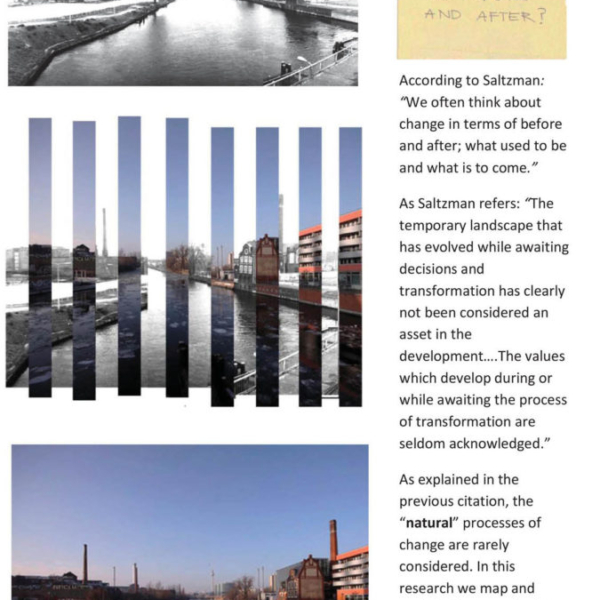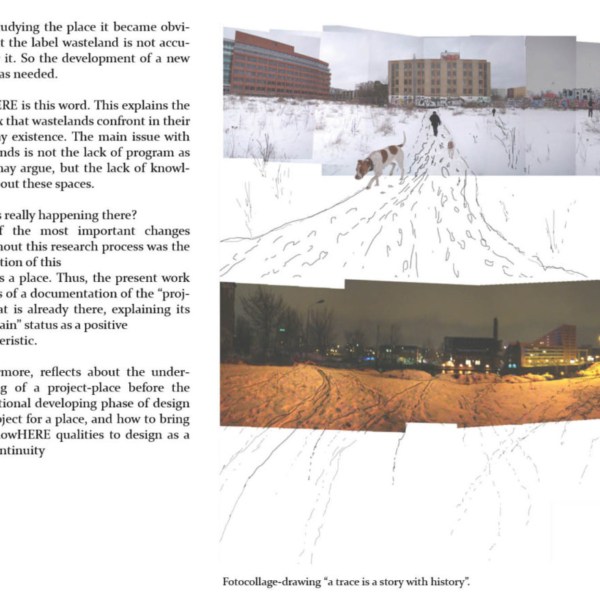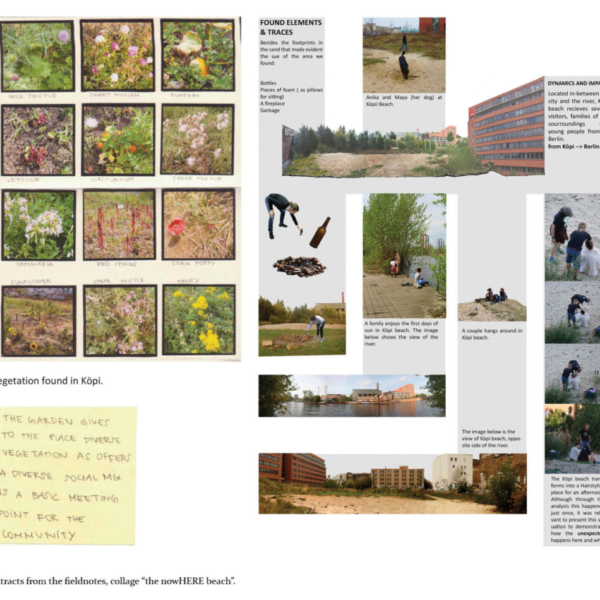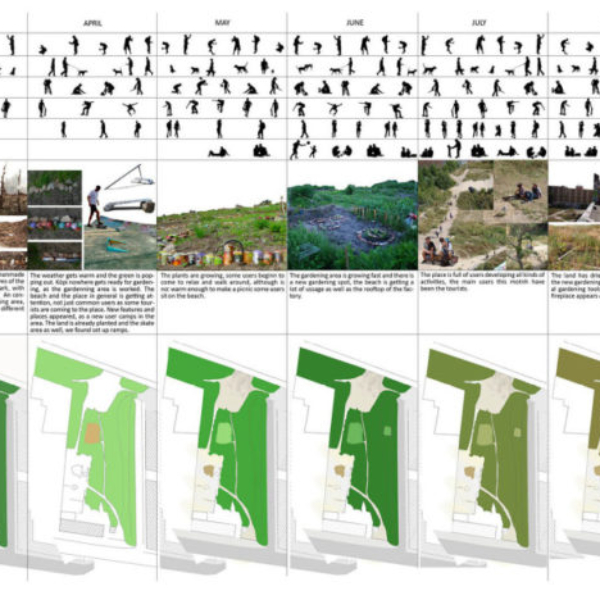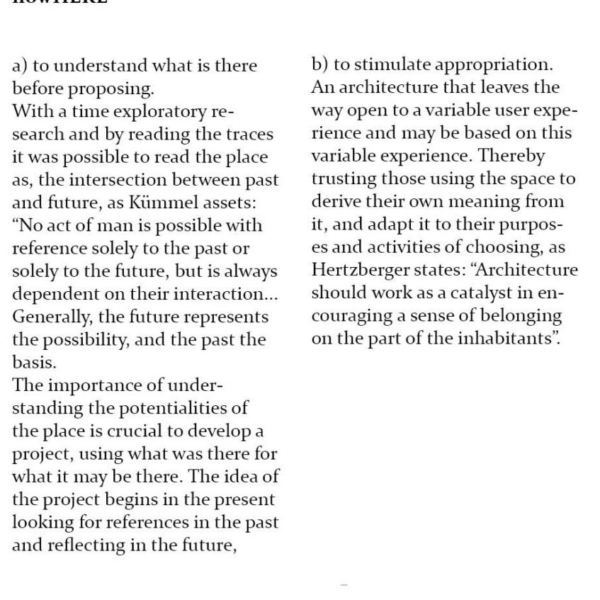The Transformation of a noWhere into nowHere: A story about Köpi Wasteland
This project reflects on the power of language in the destruction of places that seemingly aim to be renewed. It discloses a concrete story of a research made through a dialogical (Morin [1999] 2008; Bakhtin [1930s] 2001) practice, making visible social disruptions and in-place-time stories.
While trying to discover the impact of the Berlin Wall on the city today, a place was found inside the inner city ring of Berlin: Köpi wasteland, an old military area which used to be a part of the in-between space of the Berlin wall. Through the field work and lived experience of this place, the wasteland label was questioned, becoming clear that not only the name “wasteland” failed to define the specific features and potential of this urban space, but also that this label could have negative consequences on the process of renewal by neglecting what was already happening there.
For architects, urban planners and landscape designers, it is important to understand the places where we work and to be accurate in naming them. Naming is understanding, naming is meaning. This inaccuracy of naming places and the problems of limiting the vocabulary used to describe a place reveal the paradox that wastelands confront in their everyday existence. Regarding urban renewal, urban resilience or in general urban discourse the main issue with wastelands is not the lack of program as some may argue, but the lack of knowledge about these spaces, as Secchi (2007) points out. We asked what are these places and what is really happening there?
The experience within this place revealed the potential of neglected urban areas (Clement, 1984 & 2003) when inhabitants fully immerse themselves in appropriating them, by making the most with whatever they find there, transforming a space into a place of belonging.
This lived time (Till, 2009) gives these landscapes an entirely new value reframing the label: from the now (referring to the temporal influence) and the here (referring to the specificities of the place). Consequently a noWhere becomes a nowHere. Furthermore, we reflect about the relevance of understanding a project-place before the conventional developing phase, and how to bring these nowHere qualities to design process. Thus, the present paper claims the need to be really careful with the labels we use to classify the urban spaces. Words frame the way we perceive and understand places, and consequently change the way we will transform them for better or for worse.


